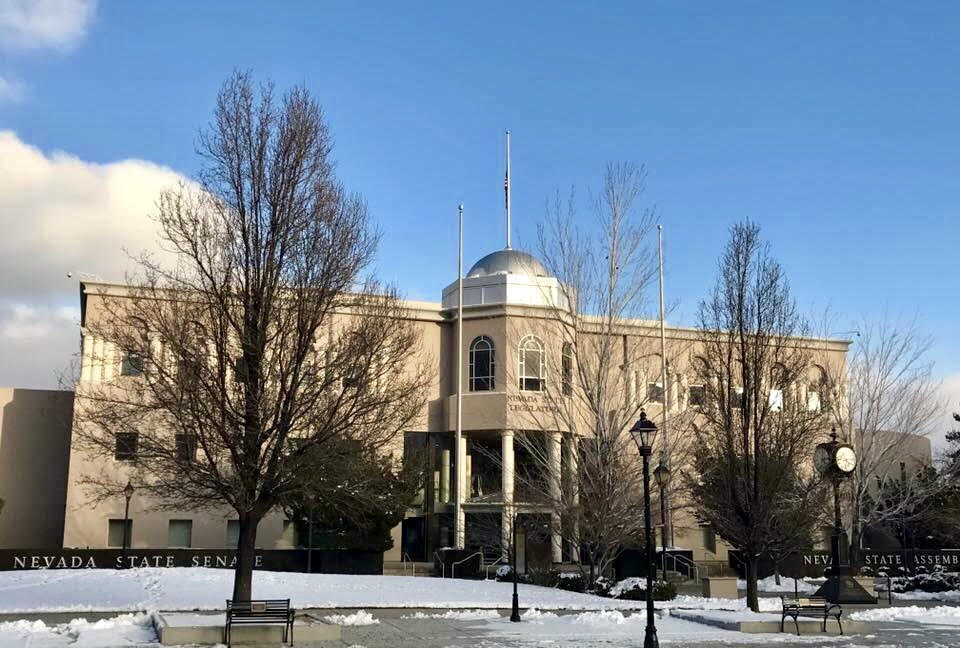Health impacts of carbon pollution and climate change

by Lisa Abrahime and Joanne Leovy
Breathing has been difficult in Nevada this summer. Between the thick haze of wildfire smoke blanketing much of the state, and invisible heat-related air pollution, Nevada’s air quality has been poor for many weeks.
Recently, Clark County received an ‘F’ grade in air quality ratings from the American Lung Association, with dangerous levels of ozone and particulates. Las Vegas and Henderson together ranked as the 12th most polluted city in the U.S. in terms of the number of high ozone days.
As health-care professionals, we seek to bring attention to the health effects and health costs of carbon pollution and climate change.
We see plenty of first-hand effects of carbon pollution and climate change in our community. Recently, a cancer patient missed a life-sustaining treatment because of respiratory problems that occurred with the poor air quality, and sadly this is not an isolated event. We also routinely see increases in hospitalizations and health-care usage when the air quality is subpar.
Evidence clearly shows that climate change increases lung diseases by increasing ground ozone and fine particulates that settle in the lungs and cause inflammation. Warming is extending and worsening our allergy season. Climate change and carbon pollution can also worsen heart disease, increase strokes, and increase some cancers. Recent evidence shows a connection between carbon pollutants and dementia, attention deficit disorder and other neurologic problems.
With worsening climate change, Nevada athletes and outdoor workers could see more heat stroke. Heat can also bring new mosquito-borne diseases to the community, including Zika and Dengue Fever. In addition, weather disasters, like fires, floods and excessive heat have been shown to worsen mental health disorders, increase substance abuse and increase violence.
Carbon-pollution health effects are distressingly costly to treat. Health savings from climate action may actually be greater than these costs. Mitigation to keep warming below 2 degrees C in 2050 will save an estimated 200,000 lives, dramatically reduce hospitalizations and avoid untold millions of lost school and work days. Health benefits of such mitigation are estimated at $200 billion per year in the U.S., compared to no action on climate.
The overall health of a community contributes to its prosperity, safety and resilience. In health care, we focus on modifiable behavioral factors of health such as diet, exercise and ensuring a safe environment. All of those modifiable factors are affected by carbon pollution and our earth’s changing climate. How will exercise be impacted if it is continually too hot, dusty or polluted to be outside? How can we foster a safe environment or resilience with increased drought? Sincere dialogue is needed to discuss these types of difficult questions.
Some may assume tackling carbon pollution and climate change is an undertaking that is too big, too late. Decreasing atmospheric CO2 levels will indeed usually occur slowly, but reducing ground ozone and particulates can have immediate health benefits. The 1996 Atlanta Olympics implemented strict traffic controls which resulted in a 42 percent decrease in asthma-related hospitalizations. Likewise, the 2011 “Carmageddon” closure of the Los Angeles I-405 freeway saw air quality improvements of up to 83 percent, along with immediate reductions in ER visits and 911 calls.
Reducing carbon pollution can result in amazing improvements in public health, while boosting Nevada’s long-term economic prospects. That’s why, according to the Lancet commission in 2015, “tackling global climate change can be the greatest public health opportunity of the 21st century.”
Nevada can lead the nation to a clean energy economy if citizens engage our political leaders at both the state and national level. We applaud steps taken by Nevada lawmakers of both parties to accelerate a transition to clean air and renewable energy. Favorable net metering rates from the PUC, the utility’s development of large-scale solar projects, the governor’s leadership on building the electric highway and ballot Question 6 to raise the Renewable Portfolio Standard are all important steps.
At the federal level, where action has lagged, a robust price on carbon could transcend the partisan fight over federal rule-making. We favor the Carbon Fee and Dividend proposal from Citizens’ Climate Lobby, which places an escalating fee on carbon fuels and returns this revenue directly to households. This proposal will encourage Nevada’s clean energy economy, put money in the hands of working people, grow jobs, increase the GDP and best of all save lives.
Lisa Abrahime, RN, MSN, OCN is a local Oncology nurse, and Joanne Leovy, M.D., is a family physician. Both are members of Citizens’ Climate Lobby in Las Vegas.
